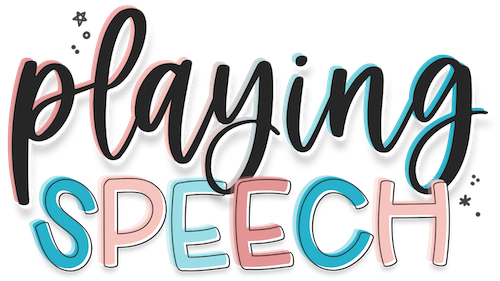Phonological Awareness and Speech Sound Disorders: What Every SLP Should Know
We have so much evidence to show us that children with speech sound disorders have an increased risk for poor phonological awareness and literacy skills (Gillon, 2005). We ALSO have evidence that proves that targeting speech sound therapy within the context of phonological awareness activities improves BOTH speech production AND literacy skills (Gillon, 2000; 2002). So, as SLPs, we should be targeting both, right? We should be targeting phonological awareness skill with out children with speech sound errors. And better yet, we should be using the child’s errored sounds as the basis for the phonological awareness tasks we use.
I have a way for you to do that very easily! But first, we should talk about a few terms with hear often when talking about “phonological awareness”: phonological awareness, phoneme awareness, and phonics. Though they might sound similar, each plays a unique role in helping children develop reading and writing skills. Let’s break them down.
What is Phonological Awareness?
Phonological awareness is the broadest of the three concepts. It is an ”umbrella term” that refers to a child's ability to recognize and manipulate various units of sound in spoken language - including words, syllables, onsets (initial sounds), and rimes (ending sounds). This skill is crucial because it lays the groundwork for more specific skills like phoneme awareness and phonics. Activities that build phonological awareness might involve identifying rhyming words, counting syllables, or clapping out the number of words in a sentence.
What is Phonemic Awareness?
Phoneme awareness skills are a subset of phonological awareness and focus specifically on the smallest units of sound—phonemes. Phonemes are individual sounds that make up words, such as /b/ in "bat" or /s/ in "sat." Phoneme awareness involves skills like segmenting (breaking down a word into its individual sounds), blending (combining sounds to form words), and manipulating phonemes (e.g., changing the /c/ in "cat" to /h/ to make "hat"). This skill is crucial for decoding words and is often a predictor of future reading success.
What is Phonics?
Phonics, on the other hand, bridges the gap between phonological awareness and actual reading and writing. It involves teaching the relationship between phonemes and their corresponding letters or letter patterns (i.e. graphemes). For example, phonics instruction helps children understand that the letter "c" can represent the /k/ sound in "cat" and the /s/ sound in "cereal." Phonics instruction is more explicit and involves teaching how these letter-sound correspondences are used to read and spell words.
Why Should SLPs Care About Phonological Awareness?
As mentioned before, phonological awareness deficits are more prevalent in children with speech sound disorders. As SLPs, we usually see these children first! Families come to us for help with a speech sound (or 2 or 3). But we can be doing so much more than just helping the child say a sound correctly. We can also be enhancing their phonological awareness skills along the way!
We have research that shows that targeting speech sound production within the context of phonological awareness activities improves speech production AND literacy skills. More bang for our buck!
AND, we can target phonological awareness skills easily within the context of our speech sound practice! For example, we can simply use words with the child’s target sound embedded in them to practice segmenting, blending, and isolating initial or final sounds.
Want Help Seamlessly Integrating Phonological Awareness and Speech Sound Targets?
For speech therapists looking to support their clients’ development in both phonological awareness and articulation, the Phonological Awareness Activities Bundle is an awesome tool. This comprehensive resource seamlessly integrates essential phonological skills like rhyming, segmenting, and blending with targeted articulation practice based on the sound the child needs to work on! By combining these areas, the Phonological Awareness Activities Bundle ensures that children not only work on their speech sound production but also enhance their phonological awareness skills at the same time! Designed with engaging activities and interactive materials, this resource gets hands-on while also getting high sound practice trials, providing a comprehensive approach to addressing and improving speech and literacy skills in one cohesive package.
Sign up below to join my email list and get access to exclusive freebies!
Sources:
Gillon G. T. (2000). The Efficacy of Phonological Awareness Intervention for Children With Spoken Language Impairment. Language, speech, and hearing services in schools, 31(2), 126–141.
Gillon, G. T. (2002). Follow-up study investigating the benefits of phonological awareness intervention for children with spoken language impairment. International Journal of Language & Communication Disorders, 37(4), 381–400.
Gillon G. T. (2005). Facilitating phoneme awareness development in 3- and 4-year-old children with speech impairment. Language, speech, and hearing services in schools, 36(4), 308–324.
Hesketh, A., Dima, E., & Nelson, V. (2007). Teaching phoneme awareness to pre-literate children with speech disorder: a randomized controlled trial. International journal of language & communication disorders, 42(3), 251–271.



